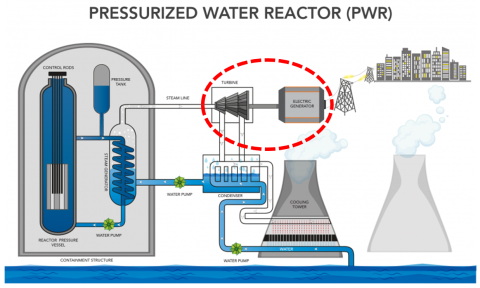There’s been a lot of discussion lately about the best way to meet the expected increases in U.S. power demand, driven in part by manufacturing growth and the rapid development of large-scale data centers. That has spurred a renewed interest among regulators, industry leaders and the general public in nuclear power. But while traditional reactors are known for their cost overruns and construction delays as much as the massive amounts of carbon-free power they produce, some see a better way forward in the form of small modular reactors (SMRs). Advocates with “uranium fever” say they can be built without many of the problems that accompany their larger cousins and offer a number of potential advantages, including siting flexibility, price and efficiency. In today’s RBN blog, we’ll look at the state of nuclear power in the U.S., examine the potential for SMRs, and discuss the hurdles they face to obtaining the necessary permits and ultimately beginning operation.
First, let’s start with some basics about traditional nuclear power. A pressurized water reactor (PWR), the most common design in operation, uses uranium pellets to heat water through fission. (Fission occurs when a neutron hits a larger atom, splitting it into two smaller atoms.) As shown in Figure 1 below, the high-pressure hot water is used to boil water in the steam generators and produce steam. The steam is used to spin large turbines that drive electric generators to produce electricity (see dashed red oval). Large nuclear power plants can have an output of more than 1,000 megawatts (MW) and deliver up to 24 million kilowatt-hours (kWh) daily. They are mostly built on site and can cost many billions to construct and operate. Most nuclear plants in the U.S. have large concrete domes covering the reactors to contain any accidental radiation releases. Some have cooling towers and some use water from lakes, rivers or the ocean for cooling, meaning that access to large amounts of water is essential.
Figure 1. Schematic for Pressurized Water Reactor. Source: Department of Energy
Join Backstage Pass to Read Full Article









